
WHEN IT CAME TO WAR, EISENHOWER AND MONTGOMERY WERE ALLIES, BUT THAT DIDN’T MEAN THEY HAD TO LIKE EACH OTHER.
[caption id="TheGeneralandtheFieldMarshal_Feature" align="aligncenter" width="1024"]
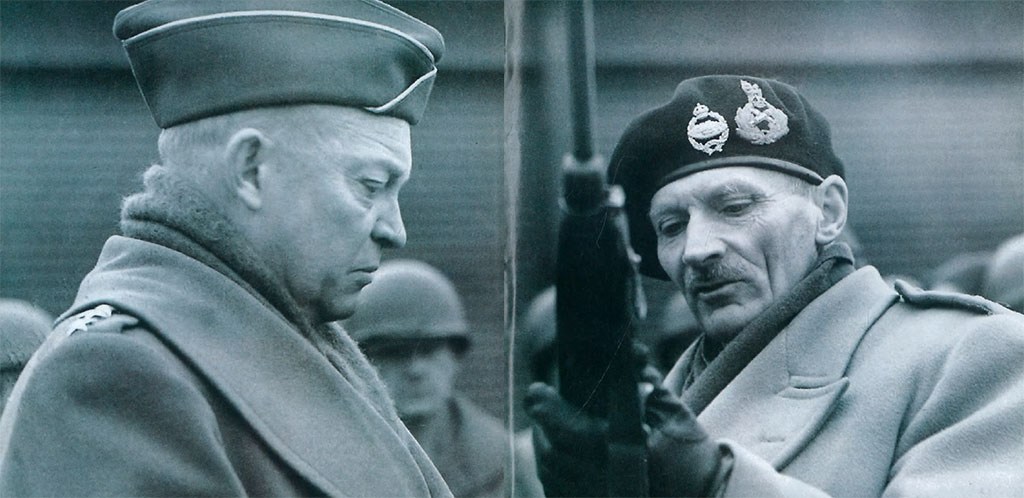
HULTON ARCHIVE
[caption id="TheGeneralandtheFieldMarshal_img1" align="aligncenter" width="849"]
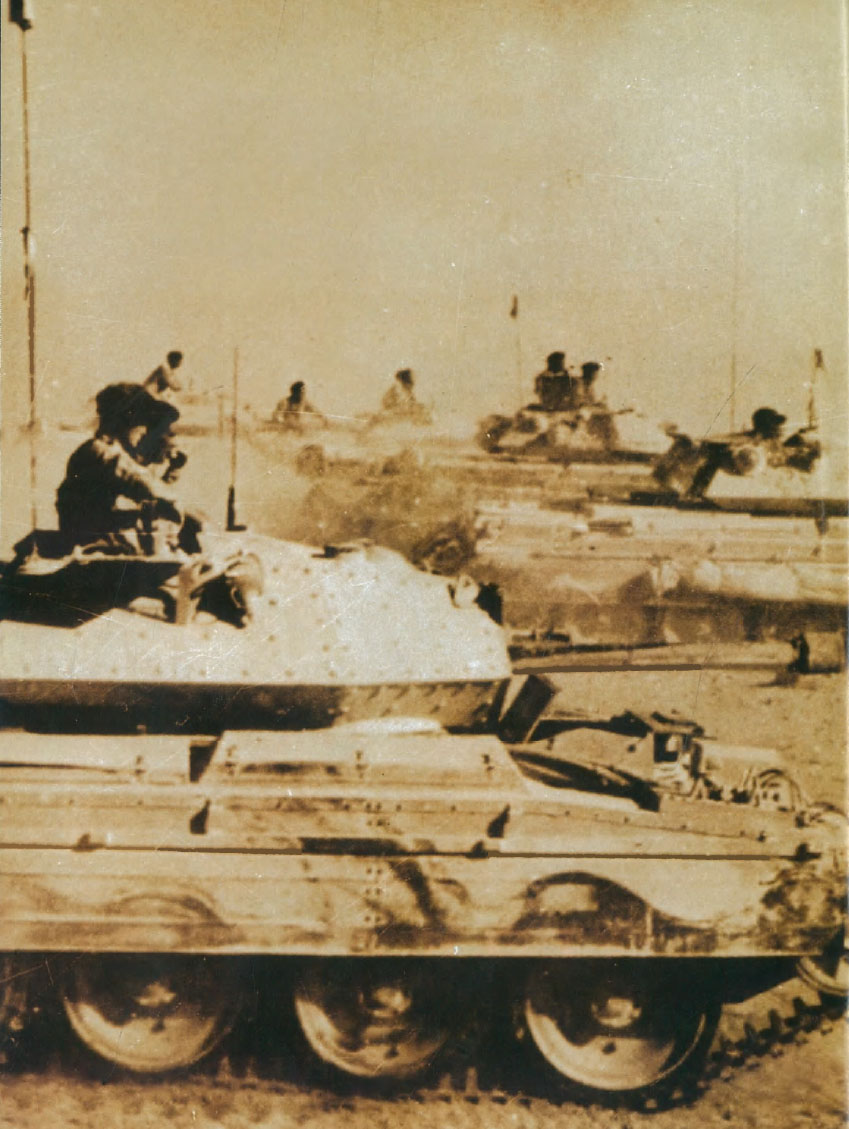
IN EARLY 1942, shortly after the United States had entered World War II, the American Army’s Chief of Staff, General George Marshall, sent a relatively unknown Brigadier General
named Dwight Eisenhower to England to report on the state of Anglo-American cooperation in the war in Europe. While in London, Eisenhower made an appointment to meet a rising star in the British Army, Major General Bernard Law Montgomery.
Montgomery was never one to mask his opinion of those whose military genius he considered inferior to his own—a group that included virtually every soldier on the planet. He arrived late for the meeting, then told the American, “I’m sorry I’m late, but I really shouldn’t have come at all. “Montgomery showed a similar lack of respect throughout the short interview, even scolding Eisenhower for lighting a cigarette.
Eisenhower’s assessment of his future subordinate was concise. “That son of a bitch!” he exclaimed to his driver on his way back to London.
AS TIME WENT ON fate drew the two men together again. Although neither could have remotely imagined such a turn of events at the time of that first meeting, the unknown American brigadier would become Supreme Commander of Allied Forces in Europe, and the brash British Major General his most contentious subordinate. “Montgomery is the only man in either army I can’t get along with,” Eisenhower once lamented. Many British officers had even less liking for “Monty”—as opposed to Eisenhower, whose military skills took a back seat to his knack for forging amiable, productive relationships between the Americans and the British, and who was almost universally liked.
But even at that aggravating first encounter that sparked Eisenhower’s personal distaste for Montgomery, the future Supreme Commander saw genuine ability behind Monty’s arrogance, noting that he was “a decisive type who appears to be extremely energetic and professionally able.” Had he been reminded of this initial assessment years later, he probably would have modified his opinion somewhat. A capable commander Montgomery proved to be, and decisive in the sense that once he made up his mind to do something his way, he would not be swayed. Likewise, his energy was never more evident than when preaching his military philosophy to subordinates, or mingling with his troops in an effort to bolster morale. But when it came to aggressiveness on the battlefield, he often infuriated Eisenhower with his methodical obsession with addressing every last detail before risking an advance.
[caption id="TheGeneralandtheFieldMarshal_img2" align="aligncenter" width="478"]
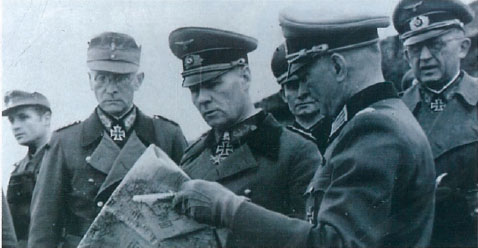
© HULTON ARCHIVE
To Montgomery’s credit, he seems to have understood and accepted the political considerations that dictated that the Supreme Commander be an American and, at least outwardly, did not show any resentment when the less-experienced Eisenhower was elevated to a position of authority over him.
The first opportunity the two allies had to cooperate in prosecuting a campaign came in November of 1942 with the American landings in North Africa, Operation Torch. The landings trapped the German Afrika Korps between the Americans and Montgomery’s 8th Army to the east. The first battles fought by the green American troops resulted in embarrassing defeats, and the British generals quickly lost conIke. The steady efficiency both men had exhibited during the planning stages suffered severe strain in the heat of battle. Montgomery had promised to capture the key French town of Caen on the first day, but a month later he still had not pushed the German defenders out. Eisenhower, reminded of Monty’s plodding progress during the Sicilian and Italian campaigns, seethed at the lack of progress.
The stalemate threatened the success of the invasion, but also the cohesion of the Allies. Many echoed Eisenhower’s frustration over Montgomery’s lack of progress. Others insisted that the hero of El Alamein had things well under control and resented any implication that he was not achieving results. Polarities developed and animosities grew.
Explaining away his repeated attacks that gained little ground, Monty declared that he was defeating the Germans by forcing them to commit their reserves piecemeal in order to plug holes in their defences, rather than massing for a counterattack. In the end, this proved true enough, and when the Germans finally cracked, the Allies advanced dramatically. But a debate still rages over whether this was, in fact, Monty’s plan, or if he claimed such a strategy after the fact in order to rationalize his initial lack of progress.
[caption id="TheGeneralandtheFieldMarshal_img3" align="aligncenter" width="786"]
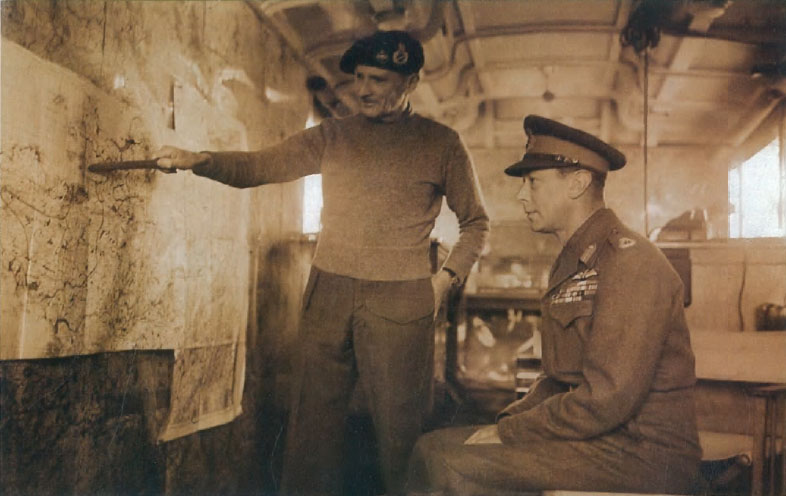
© HULTON ARCHIVE
1944 MONTY AND THE IMPERIAL WAR MUSEUM
[caption id="TheGeneralandtheFieldMarshal_img4" align="aligncenter" width="163"]
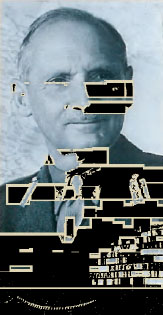
tHE LEGEND OF THE HERO of El Alamein lives on at two venues of the Imperial War Museum. A permanent exhibit highlighting the life and career of Field Marshal Bernard Law Montgomery opened at the museum’s London gallery in Lambeth on the 60th anniversary of his pivotal victory in the desert. Visitors can see such personal mementoes as one of Monty’s school reports, as well as relics of his early career during WWI and, of course, documents pertaining to his part in the preparations for the landings in Normandy. Among the medals and commendations on display is the Order of Victory presented to him by Stalin.
Monty is also remembered at the Imperial War Museum’s Duxford Airfield, in the Land Warfare Hall. The hall houses the Field Marshal’s command caravan, a mobile headquarters used by Monty during the campaign in northern France following D-Day. The exhibit also includes facsimiles of many of the museum’s holdings relating to the controversial British commander.
The Imperial War Museum opens daily, 10 am-6 pm. Admission is free. Tel: 020 7416 5320; email: [email protected]. Duxford Airfield opens daily except 24th- 26th Dec. Hours: 15th Mar-25th Oct, 10 am-6 pm; winter hours are 10 am-4 pm. Admission: adults £10, seniors £8, children under 15 free. Tel: 01223 835 000; email: [email protected].





Comments